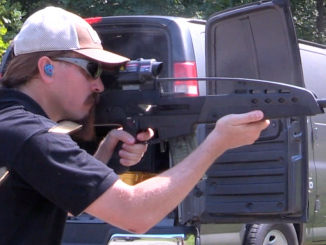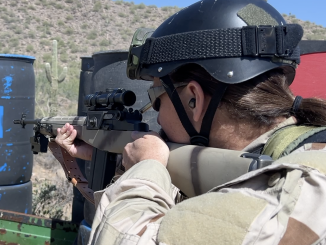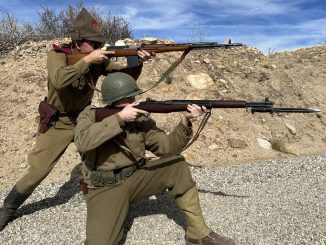Designed and patented in 1856 by Henry North (the grandson of company founder Simeon North), approximately 450 of these revolvers were made between 1856 and 1859. A first prototype was sent to the Washington Arsenal for examination in June 1856, and its successful testing led to an Ordnance Department order for 100 more. These were delivered in June 1857, and additional orders would follow. In 1859, the company was reorganized as the Savage Revolving Fire Arms Company (Henry North had been an employee, but not a partner) and the design was improved to what is today known as the Savage Navy revolver. These would prove much more successful, with about 24,000 produced during the Civil War.
The Figure 8 has an interesting action which allows rapid fire without altering the shooting grip, unlike the contemporary Colt designs. It also has a cylinder that cams forward and back, to seal against the barrel when firing. It has a six shot cylinder, caliber .36, with a 7 1/8 inch long barrel and a weight of 3 pounds and 6 ounces.
Savage Navy revolver:




You may be also interested in: Shooting the Civil War Savage Navy percussion revolver https://www.youtube.com/watch?v=aUJEeVK9PSs&ab_channel=capandball
Ok so no connections whatsoever with Arthur Savage, of savage 99 and radial tyre fame?
As far as I know there is no other connection, than the same family name: https://www.forgottenweapons.com/biographies/arthur-w-savage/.
Does or does not predate the English Tranter folding double trigger?
As far as I know William Tranter started making his famous double trigger-trigger cocking revolvers in 1853: https://www.firearmsmuseum.org.au/TranterHistory/wt_hist_fra.htm.
I think this patent (William Tranter: Certain improvements in firearms. British[?] patent No. 212., 1853, January 28th) describes its function, although the realized mechanism is different: https://www.firearmsmuseum.org.au/TranterHistory/Patents/Patent-1853-1.htm
.
When you rotate the cylinder, is it possible to fire the weapon by maintaining pressure on the trigger? It looks like it would be easy to fire a second shot without intending to.
I think it is not possible or must be avoid due to mechanical reasons.
I think if the lever and the trigger pulled together, the cock fires the gun in the lever’s rear position.
The lever must be moved its forward position. In this position the toggle locks the cylinder in its forward position; and the the bores of the cylinder and the barrel are perfectly aligned and locked together to avoid the cylinder’s rotation.
See Eon’s comment [Collier Flintlock Revolvers → November 9, 2016 at 9:13 PM]:
“Over the years, a lot of Savage-Norths have been wrecked internally by people who thought they worked just like the double-trigger Tranter.
[…]
That officer would really have hated the Savage-North. It had to be operated like the Tranter in “single-action” mode every time. First pull the ring trigger to operate the cylinder and hammer, then pull the front firing trigger to sear it off.
If you pulled both together, you stood a good chance of breaking the internal parts. Literally.”
https://www.forgottenweapons.com/collier-flintlock-revolvers-video/
Lever action revolver, cool
If you are interesting in modern lever-action carbine with rotating cylinder see https://www.thefirearmblog.com/blog/2011/04/20/rossi-circuit-judge-lever-action-410-45/